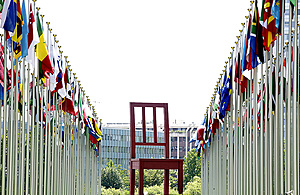Coronavirus: update on bathing season 2020
On Wednesday (13 May 2020) the government announced that people would be able to spend more time outside both for exercise and recreation in England.
As part of this revised guidance, you can now go swimming in either lakes or the sea provided that you observe social distancing guidelines. You cannot however use public indoor or outdoor pools.
This year’s bathing season runs from 15 May to 30 September 2020.
England has high standards of water quality at its bathing waters, with 98.3% of bathing waters passing the minimum standard last year in England. Of these, 71% of bathing waters were classified as ‘Excellent’, the highest water quality standard.
The latest classifications for over 400 designated bathing waters in England can be found through the Environment Agency’s ‘Find a bathing water’ site. Members of the public can also access the Environment Agency’s daily pollution risk forecasting service during this time which alerts people to any temporary reductions in water quality.
Guidance on visiting bathing waters
There are no restrictions on how far you can travel to get to bathing waters. However, you cannot visit and stay overnight at a holiday home or second home. Before travelling, check local advice on which public spaces are open and whether public amenities are available.
Visiting may be advised against if local authorities report an influx of visitors which means that people cannot safely observe social distancing guidance. If you are concerned about visiting public places, please read the government guidance for advice on staying safe in open spaces.
Claire Hughes, Director of Her Majesty’s Coastguard, said:
In England, now more than ever, people need to respect the sea and the coast. Whether you’re local or not, whatever your ability or experience in your chosen sport or leisure activity, the sea can still catch you out and be unmerciful when it does.
The majority of beaches will not be lifeguarded. If you get into trouble call 999 and ask for the Coastguard and we will come to your aid. But coronavirus hasn’t gone away and we all need to follow the rules. Remember your choices might put people, including yourself and frontline responders, at risk. Take extra care in these extraordinary times.
Update on bathing water sampling
This year, due to the ongoing coronavirus pandemic, the Environment Agency has temporarily paused non-essential work, including sampling to help slow the spread of coronavirus and maintain the ability to provide essential services.
This temporary suspension of bathing water sampling will not affect bathing water quality. More information can be found on the Environment Agency website.
Stay updated on the latest government guidance on social distancing before visiting public places. The Cabinet Office has also published the following: Coronavirus outbreak FAQs: what you can and can’t do.
People living in Scotland, Wales and Northern Ireland are advised to follow the latest advice issued by their relevant local authorities.


